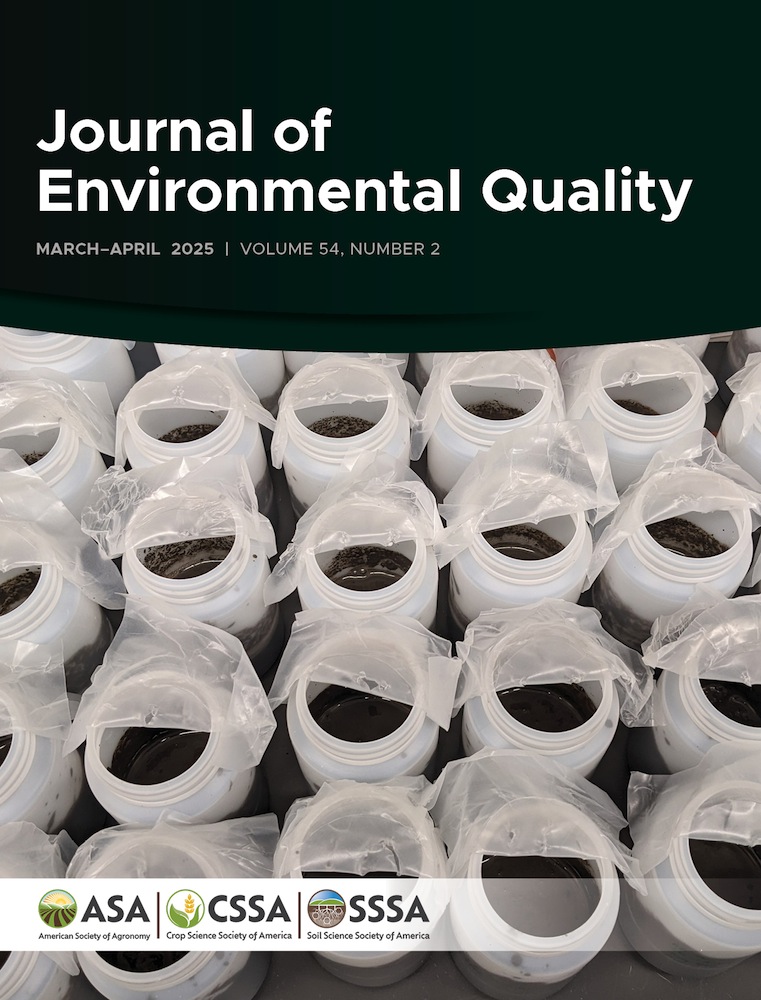Ver ítem
- xmlui.general.dspace_homeCentros Regionales y EEAsCentro Regional Buenos Aires SurEEA BalcarceArtículos científicosxmlui.ArtifactBrowser.ItemViewer.trail
- Inicio
- Centros Regionales y EEAs
- Centro Regional Buenos Aires Sur
- EEA Balcarce
- Artículos científicos
- Ver ítem
Spatial variability of nitrous oxide emissions from croplands and unmanaged natural ecosystems across a large environmental gradient
Resumen
Atmospheric nitrous oxide (N2O) is a potent greenhouse gas, with long atmospheric residence time and a global warming potential 273 times higher than CO2. N2O emissions are mainly produced from soils and are influenced by biotic and abiotic factors that can be substantially altered by anthropogenic activities, such as land uses, especially when unmanaged natural ecosystems are replaced by croplands or other uses. In this study, we evaluated the spatial
[ver mas...]
Atmospheric nitrous oxide (N2O) is a potent greenhouse gas, with long atmospheric residence time and a global warming potential 273 times higher than CO2. N2O emissions are mainly produced from soils and are influenced by biotic and abiotic factors that can be substantially altered by anthropogenic activities, such as land uses, especially when unmanaged natural ecosystems are replaced by croplands or other uses. In this study, we evaluated the spatial variability of N2O emissions from croplands (maize, soybean, wheat, and sugar cane crops), paired with the natural grasslands or forests that they replaced across a wide environmental gradient in Argentina, and identified the key drivers governing the spatial variability of N2O emissions using structural equation modeling. We conducted on-farm field measurements over 2 years at nine different sites, including a wide environmental gradient (mean rainfall from 679 to 1090 mm year−1 and mean temperatures from 13.8°C to 21.3°C), with diverse plant species life forms, and ecosystems, from the Semiarid Chaco forests in the Northwest of Argentina to the Pampas grasslands in the Southeast. On average, agricultural systems emitted more than twice N2O (+120%), had higher soil water content (+9%), higher soil temperatures (+3%), higher soil nitrate content (+19%) but lower ammonium (−33%) than natural ecosystems. We found that land use was the main driver of N2O emissions by directly affecting soil NO3− contents in both natural ecosystems and croplands. Urgent management practices aimed at reducing N2O emissions from croplands are needed to mitigate their contributions to global climate change.
[Cerrar]

Autor
Piñeiro Guerra, Juan Manuel;
Lewczuk, Nuria;
Della Chiesa, Tomás;
Araujo, Patricia Ines;
Acreche, Martin Moises;
Alvarez, Carolina;
Álvarez, Carina R.;
Chalco Vera, Jorge Elías;
Costantini, Alejandro;
De Tellería, José;
Petrasek, Marcos;
Piccinetti, Carlos Fabian;
Picone, Liliana;
Portela, Silvina Isabel;
Posse Beaulieu, Gabriela;
Seijo, Martin;
Videla, Cecilia;
Yahdjian, Laura;
Piñeiro, Gervasio;
Fuente
Journal of Environmental Quality 54 (2) : 483-498. (March-April 2025)
Fecha
2025-03
Editorial
Wiley
ISSN
0047-2425
1537-2537 (online)
1537-2537 (online)
Documentos Relacionados
Formato
pdf
Tipo de documento
artículo
Proyectos
(ver más)
INTA/PNNAT-1128023/AR./Emisiones de gases con efecto invernadero.
Palabras Claves
Derechos de acceso
Restringido
 Excepto donde se diga explicitamente, este item se publica bajo la siguiente descripción: Creative Commons Attribution-NonCommercial-ShareAlike 2.5 Unported (CC BY-NC-SA 2.5)
Excepto donde se diga explicitamente, este item se publica bajo la siguiente descripción: Creative Commons Attribution-NonCommercial-ShareAlike 2.5 Unported (CC BY-NC-SA 2.5)


